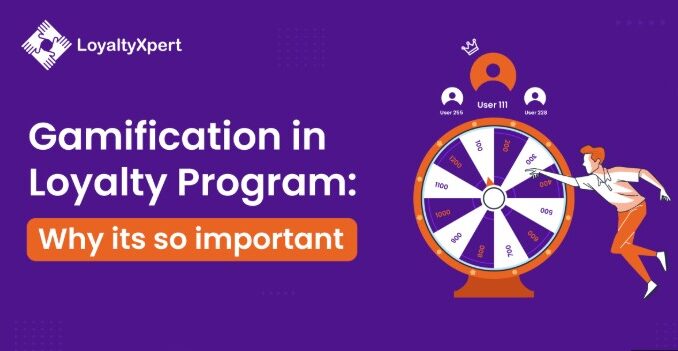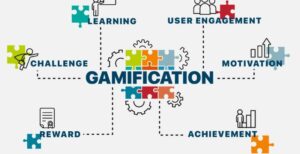
Learn the strategies and real-world examples that make gamified loyalty programs a must-have for modern brands.
Gamified loyalty programs are reshaping how companies connect with their audiences across industries. These innovative programs utilize game mechanics—such as points, badges, and challenges—to transform everyday shopping into a fun and rewarding experience. The result? Customers keep coming back for more, and brands build lasting relationships that drive real growth.

What Are Gamified Loyalty Programs?
A gamified loyalty program combines traditional reward structures with interactive entertainment elements to create compelling customer experiences. Think of earning points for each purchase, unlocking new levels, or completing fun challenges. These programs go beyond simple discounts. They create excitement, competition, and a sense of achievement.
Why Brands Love Gamified Loyalty Programs
Brands are embracing gamified loyalty programs for a reason. Here’s why:
- Enhances participation: Brands incorporating playful elements see customers engage 47% more actively with their programs.
- Increases retention: People love rewards. Gamified programs keep customers coming back, reducing churn and boosting loyalty by 22%.
- Increases revenue: Challenge-based rewards and interactive features drive customers to purchase more frequently and spend larger amounts.
- Collects valuable data: Quizzes, surveys, and challenges help brands learn about customer preferences, making personalization easy.
- Builds community: Leaderboards and social sharing features turn customers into brand advocates, creating a sense of belonging.
How Do Gamified Loyalty Programs Work
Gamified loyalty programs use several key features to keep customers hooked:
- Points System
Customers earn points for purchases, reviews, or referrals. Members earn points through various activities and can exchange them for price reductions, merchandise, or premium access opportunities.
- Levels and Progression
Just like in a video game, customers can level up. Each new tier unlocks better rewards, motivating users to keep playing—and shopping.
- Challenges and Missions
Companies design entertaining activities such as product trials or social media engagement to build deeper connections. Completing these missions earns bonus points or badges, adding excitement to the experience.
- Leaderboards
Leaderboards add a competitive edge. Customers compete for top spots, which can come with special perks or recognition.
- Badges and Achievements
Badges celebrate milestones—like making a first purchase or referring a friend. Digital badges and achievements foster feelings of success and motivate ongoing brand interaction.
Real-World Examples of Gamified Loyalty Programs
Several major brands have transformed their customer retention approaches by incorporating interactive elements into their rewards systems.
Starbucks has built a comprehensive point-collection system where customers earn rewards through purchases while progressing through membership levels. Their mobile app includes personalized goals that encourage specific purchasing behaviors, resulting in increased visit frequency and transaction values.
Sephora integrates educational components into their Beauty Insider program, offering interactive tutorials and product-discovery activities. Members can participate in beauty-focused challenges that unlock exclusive perks, creating a more engaging shopping experience while gathering valuable customer preference data.
Xbox leverages competitive mechanics within their gaming ecosystem, featuring achievement systems and community rankings that extend beyond individual games. These elements encourage continued platform usage and foster community engagement among users.
Each company has tailored their gamification approach to align with their specific customer base and business objectives, demonstrating how interactive loyalty programs can be adapted across different industries and consumer behaviors.
Interactive loyalty systems succeed by leveraging fundamental human motivations. People love to win. They crave recognition and enjoy competition. Through progress recognition and immediate responses, these systems generate positive feelings that customers connect with your company.
How to Get Started
Ready to launch your gamified loyalty program? Here are some quick tips:
- Know your audience: Design challenges and rewards that fit your customers’ interests.
- Maintain simplicity: Clear guidelines and straightforward rewards deliver the best results.
- Build community: Foster sharing behaviors and healthy competition among participants.
- Customize interactions: Leverage customer data to create targeted rewards and personalized challenges.
- Celebrate achievements: Recognize milestones to keep motivation high.
Gamified loyalty programs are more than a trend. They’re a proven strategy for building lasting customer relationships and driving business growth.
Wrapping Up
Traditional loyalty programs are fading. Modern customers seek meaningful interactions beyond basic point accumulation—they value memorable experiences. Gamified loyalty programs deliver just that. They make shopping fun, interactive, and social.
Brands that invest in gamified loyalty programs are seeing higher engagement, stronger loyalty, and bigger profits. Design your loyalty system to be enjoyable, and customers will consistently return for continued engagement.
Leave a Reply